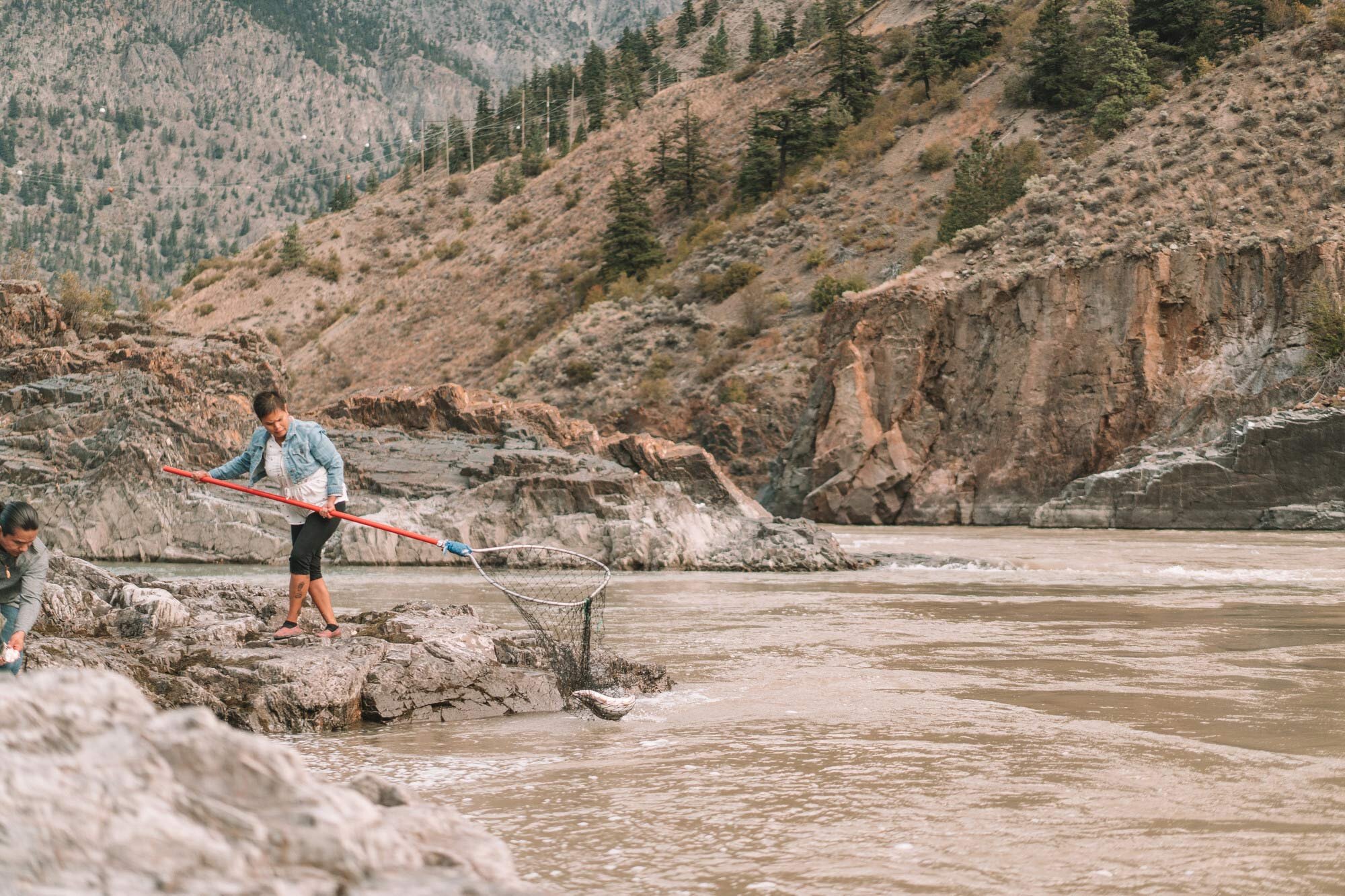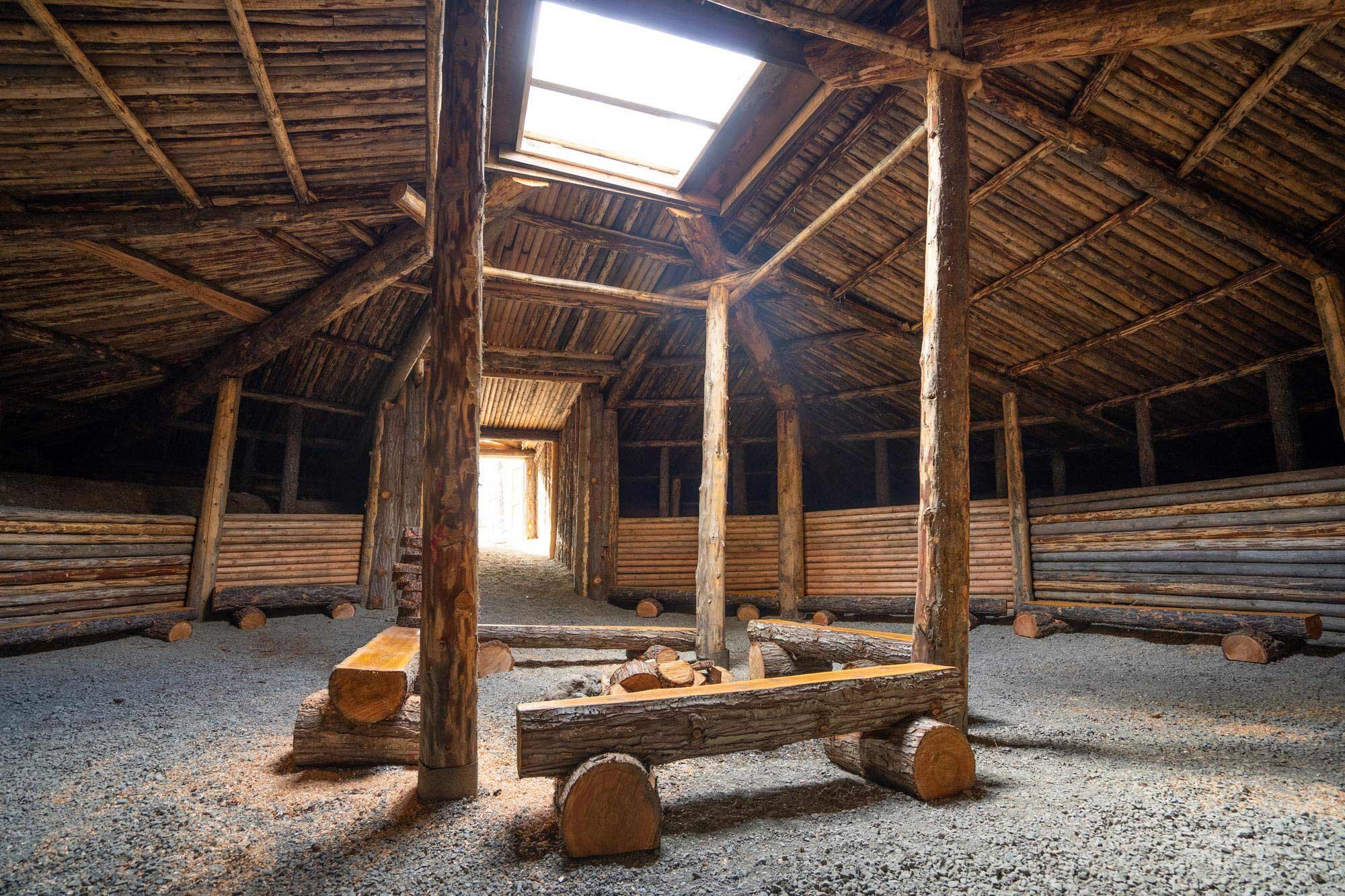
Heritage & Culture
Photo Credit: CCCTA/Tyler Cave
Step into Lillooet’s Past & Vibrant Culture
People have called Lillooet home for generations, drawn to the area’s impressive outdoor scenery, mild climate, and rich agricultural abundance. The land has inspired a vibrant arts scene and cultural side with many thriving artisans.
Learn about Lillooet’s past with a visit to the museum and the many heritage sites. Discover the Indigenous way of life through guided tours and festivals. Connect with artists and artisans at galleries, shops, and the Lillooet Farmers’ Market.
Photo Credits: Lillooet Museum & Visitor Centre, CCCTA/Tyler Cave,
CCCTA/Tyler Cave, BC Farmers’ Market Trail / April Roberts
Lillooet Museum
Glimpse into Lillooet’s past in the Lillooet Museum, itself housed housed in the former Anglican Church, St Mary’s the Virgin. The church was first built in 1860, from timber carried piece by piece on the backs of miners and mules over the rugged Harrison-Lillooet trail, then reconstructed in 1961 with the original chancel.
Browse through the collection of artifacts, including the original church service bell and melodeon, gold mining relics, Indigenous artifacts, machinery, memories of Lillooet’s pioneer days, the largest mounted Rocky Mountain Elk head ever registered in BC, and more. Take a peek downstairs to discover the old newspaper office of fiery and famed editor Margaret “Ma” Murray.
Lillooet's Indigenous Experiences
The St'át'imc are the original inhabitants of the territory. The St'át'imc way of life is inseparably connected to the land, mountains, rivers, and lakes. The lessons of living on the land are shared with children by elders, such as the best times and locations to hunt, fish, and harvest ingredients for food and medicines.
Rich in history, traditional activities continue among the St’at’imc today. Learn more through the St'át'imc culture and history through cultural experiences and tours.
Open Now!
Xwisten Experience Tours
Discover one of British Columbia’s most immersive Indigenous cultural experiences. Xwísten Experience Tours offers guided pit house (S7ístken) tours, salmon drying demonstrations, and storytelling rooted in thousands of years of St’át’imc culture and land-based knowledge. Visitors learn directly from community members about traditional food harvesting, sustainable practices, and the living heritage of the Xwísten people.
Learn more at XwistenTours.ca
Phone: 250.256.7844 Email: tours@xwisten.ca
Historic Sites Around Lillooet
In 1860 Lillooet was one of the largest cities west of Chicago, second only to San Francisco. This history is entrenched in the BC Gold Rush of 1860, when Lillooet was Mile "0" on the Cariboo Pavillion Road, the first wagon road to be surveyed in BC and the route to the Cariboo gold fields.
Lillooet’s Golden Miles of History Map
Today you can discover pieces of Lillooet's history through panels and plaques on the Golden Mile of History self guided tour. Step into Lillooet’s fascinating past with the virtual map or pick up a copy at the Lillooet Museum & Visitor Centre.
Featured Heritage Sites
Lillooet is full of history. These are just a few of the many heritage sites in the area, where you can learn about the people and events that shaped Lillooet and the Interior British Columbia as we know it today.
Stories of Our Past
Arts in Lillooet
Visualize Lillooet’s culture.
Lillooet’s breathtaking surroundings and vibrant culture are reflected within the artworks of many thriving local artisans.



















▼790 Main St, Lillooet, BC, V0K 1V0
» Website | ✉ Email
☎ T: 250-256-4308
Facebook
The Museum is situated in downtown Lillooet at St. Mary the Virgin, a former Anglican church. The original St. Mary's, which was torn down in 1960, stood on the same spot and arrived on the backs of miners and their mules, who carried the timber, piece by piece over the rugged Harrison-Lillooet trail in 1860. The original chancel was incorporated in the new St. Mary's and the melodeon and bell from the old church are displayed in the museum.
The Lillooet Museum offers a vast collection of historic artifacts.
Hours:
From May to June, Tuesday to Saturday, 10am-4pm
From July to August, Tuesday to Saturday, 9am-5pm
From September to October, Tuesday to Saturday, 10am-4pm